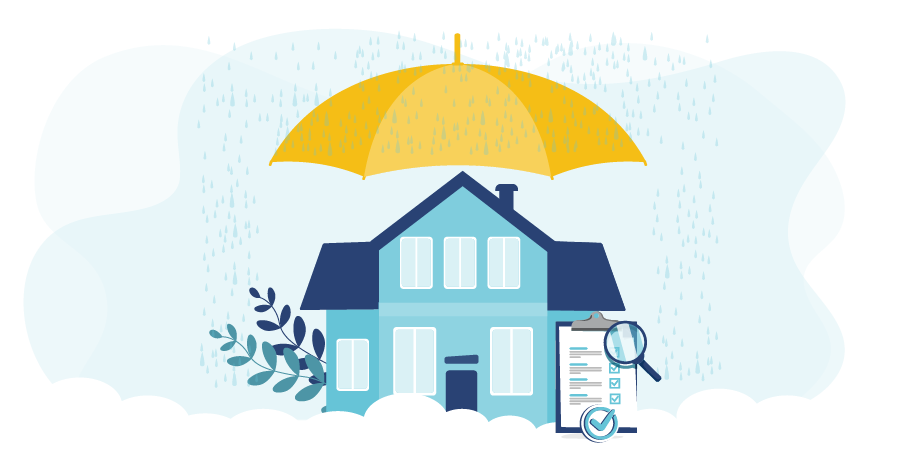Homeowners insurance isn’t as price-competitive as auto insurance, making it one of those things you have to buy — mortgage lenders require having homeowners insurance set up before a home loan is finalized so that their collateral is protected — but something that many people are likely to shop for once and then forget about it.
Most homeowners are unlikely to ever use their insurance. That can also cause them to buy their first policy and then have it renew each year without updating it or shopping for a better policy. Half of home-loss claims are $8,000 or less, according to a Consumer Reports survey, so even long-time homeowners may be unlikely to ever file a claim and learn how well their insurer performs.
Shopping for homeowners insurance — whether as a new homeowner or for your current home — can save you hundreds of dollars to more than $1,000 per year in premiums, Consumer Reports says. About 9 percent of its survey respondents had switched insurers in the previous three years, mostly because their new carrier gave them a better price.
If you’re refinancing your home loan, it can be a good time to shop for homeowners insurance because if your insurance premium is in escrow and part of the mortgage payment with your property taxes, you may not even realize if your insurance costs have increased.
Where to start?
As a home buyer, you have plenty of things to shop for: a real estate agent, home, loan, appraiser, home inspector and movers. Adding homeowners insurance to your list can seem overwhelming. But it doesn’t have to be.
Start shopping before the closing date so you can find the best rates and ensure proper coverage, says Margaret Koosa, CEO and financial advisor at The Alchemists financial services firm. Koosa, who is licensed to sell property and casualty insurance, urges getting recommendations for a good insurance agent from people you know, based on customer service, responsiveness, and willingness to maintain competitive rates.
Residents of California, Florida and other states whose insurance departments publish rate comparisons for standardized coverage can find the lowest-priced insurers on the state insurance department’s website and contact insurers for custom quotes.
Without such state assistance, contact an independent agent who sells insurance from multiple carriers. Go online to the Independent Insurance Agents & Brokers of America to find one. An independent agent, also called a broker, should shop rates periodically for you, even after you have a policy through them.
Compare apples to apples
You can compare policies yourself, ask your broker to do it for you, or take a quote to a competing agent to do a side-by-side comparison. However you do it, make sure you’re comparing the same types of coverage and deductibles.
Basic coverage should include the replacement cost for the dwelling and the costs of replacing personal property inside the home.
An actual cash value policy, or ACV, only provides the replacement costs of items at their depreciated value. A full replacement policy will pay to buy new items at current prices.
Make sure you’re offered a deductible that you’re comfortable with, says Jeremy Oswald, an insurance agent at Alliance West Insurance in Tacoma, Wash. The deductible is the amount you’d pay if a loss occurred and you filed a claim. Deductibles are usually $1,000 to $1,500, but can be as high as $5,000 to $10,000, Oswald says. A high deductible should lower your premium.
Holes in coverage to look out for
Make sure the covered perils are the same in the policies you’re comparing. If a peril isn’t listed, then it’s probably not covered. “All perils” coverage excludes certain things, such as earthquakes and floods. “Named perils” coverage will list only what is covered, such as fire, smoke, lightning, and theft.
“Most standard insurance policies don’t cover earthquake, unless added as an additional rider for an additional premium,” Oswald says. Flood insurance must also be purchased separately, and may be required by the lender if the home is in a higher risk flood zone, he says.
Hurricane coverage is also extra, Koosa says, and homeowners should get a flat deductible and not a 2-3 percent deductible. For a house valued at $250,000, it’s cheaper to pay a $1,000 deductible than have one equal to 3 percent of the value of the house, or $7,500.
Most policies have limits for items such as jewelry and guns, sometimes as low as $1,500, so insuring a $10,000 wedding ring will require a rider, or add-on to a policy, Oswald says.
Pipes outside a house may not be covered if they break, says Angi Orbann, vice president of property for personal insurance at Travelers Insurance in Hartford, Conn.
“The worst-case scenario is for a homeowner to expect their claim to be covered, and then it isn’t,” Orbann says.
Switch policies regularly to save money?
Shopping for homeowners insurance every year before renewal time is a good idea. But are you likely to be offered a lower premium by a new insurer to get your business? Should you change policies every now and then to get the best price? Not necessarily.
In general, home insurance pricing is consistent between new business and those who have been with an insurer for many years, says Orbann of Travelers. But consumers should still shop around, she says, and look for discounts by bundling coverage with their car insurance, and adding deadbolt locks, cameras and other safety devices to their home.
Only switch carriers if you can get a large discount, Oswald recommends.
“It never hurts to shop around, although as a general rule, I recommend sticking with a carriers versus switching every year, unless the savings are substantial,” Oswald says. “Insurance carriers look at previous policy longevity when offering discounts on new policies, so if you’re moving your policy every year, you are less likely to qualify for those better discounts.
“Additionally, a carrier is more likely to work with you and not cancel you if you’ve been with them for awhile when a claim arises.”





